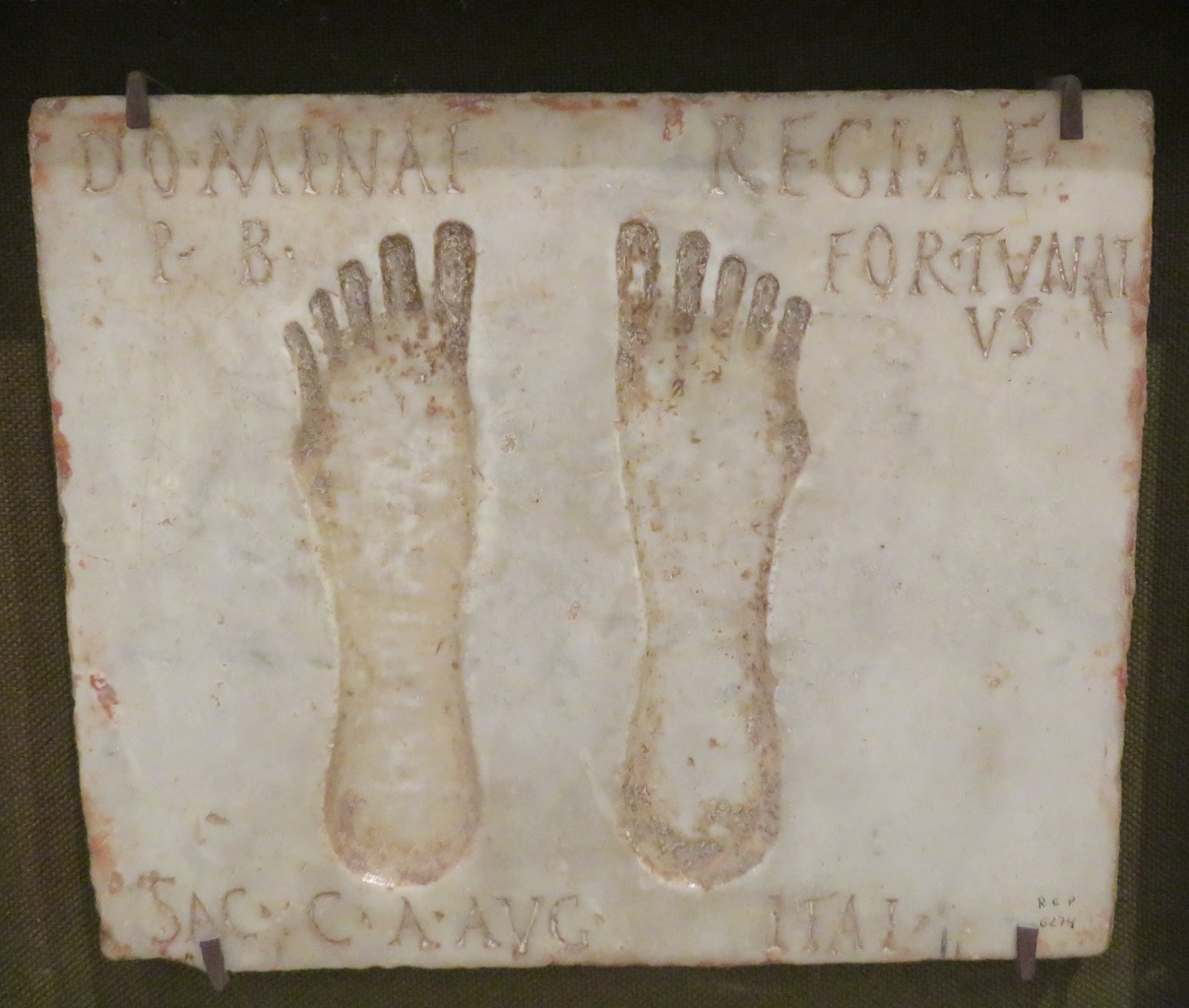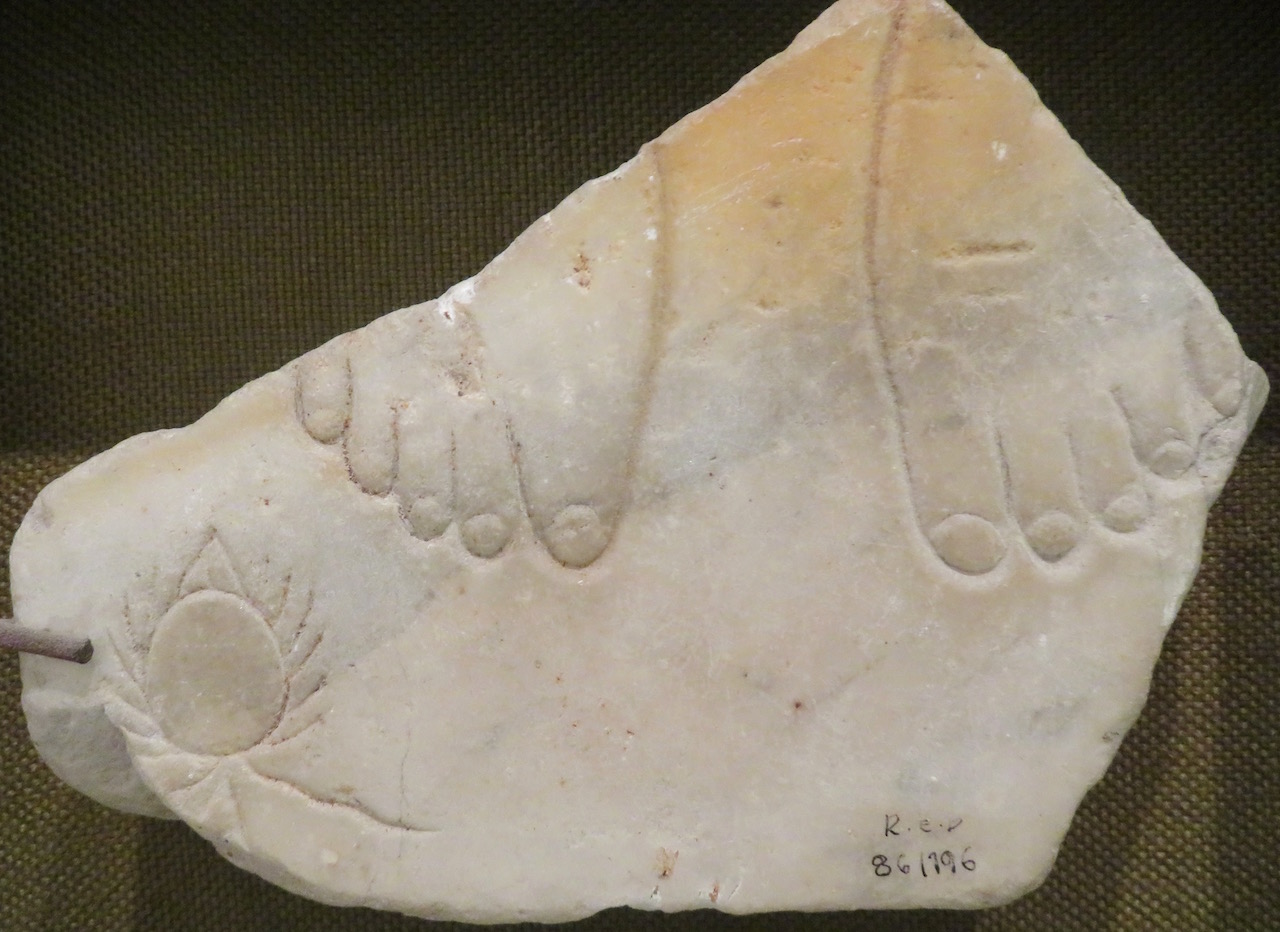Not oops-stepped-on-a-wet-tile footprints but deliberately carved-into-marble outlines of feet. Some with toenails, some with sandal straps, some very slender, and some facing opposite another pair of feet.

What a delight to find them on the wall of the Archaeological Museum in Sevilla. Especially after the disappointment of discovering the ruins of Italica closed while I was in Sevilla because they were filming Game of Thrones there.
I had not seen anything like these before. The English sign in the museum told me almost nothing about them, except that they were votives dedicated to goddesses.

But where were they from? There was another related sign in Spanish in the museum about the amphitheatre games. So were they from the amphitheatre at Italica? Why have I never seen anything like them at other amphitheatres? More digging was needed.

After an internet search, I discovered a chapter written by Louise Revell, Footsteps in Stone: Variability within a Global Culture, from the book Beyond Boundaries: Connecting Visual Cultures in the Provinces of Ancient Rome. In it she says that these marble plaques, plantae pedum, were found in the amphitheatre and theatre at Italica. The ones dedicated to Nemesis were found at the amphitheatre, which makes sense since she was the patroness of gladiators. The ones found at the theatre were set in the steps in the portico and dedicated to Isis. They date from the mid 2nd to early 3rd centuries.
I also discovered that there were two carved reliefs with feet dedicated to Isis Domina found at the Temple of Isis in Baelo Claudia, south of Cadiz. But I had not seen them when I visited Baelo Claudia, and I am not sure if they were on display there.

Other plantae pedum have been found in Dion, Greece, and the footprint inscriptions were also common in the Roman provinces of North Africa, according to Revell.








